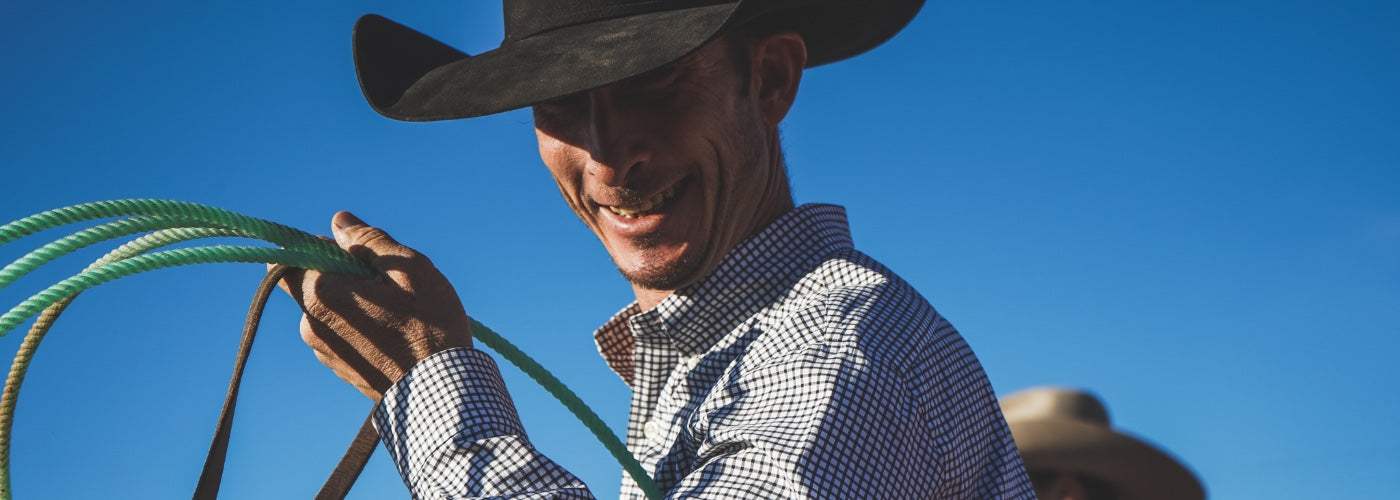
7 Roping Tips for Beginner Ropers
Whether you work on a cattle ranch or compete in the arena, you should always be working to improve your skills with your rope. In this article, you will find a few tips to help take your roping to the next level. We can help you get better at roping by introducing you to different roping drills, the best roping dummy for you, how to use a mechanical roping steer, help you buy the proper roping supplies and more.
7 Tips on How to Get Better at Roping
Being a world-class roper is something that requires a lot of time and effort. As cliché as it sounds, you must always practice with a purpose and not just be making dust. We’ll show you how the right tools and the right mindset can help you achieve your roping goals.
1. Using a Roping Dummy
The best way to develop a feel for your rope is by roping a dummy. A roping dummy is great to use for a warm-up before roping and to build muscle memory while training. The important thing to remember is that you must be disciplined when roping the dummy, because bad habits can be developed on ANY roping dummy, no matter if it’s a Heel-O-Matic Bones 2.0, a Smarty Pipes, a 7K Roping Something Calf, or a RopeSmart Smart One Roping Dummy.
Most heading dummies for sale at NRS come with different-sized horns. This allows you to practice solid fundamentals when roping larger horns and really dial your loop in as you rope smaller horns which you’re more likely to rope at the USTRC and Ariat World Series of Team Roping jackpots. Along with different horn sizes, you can also practice roping from different positions in order to help broaden your game and accuracy with your loop. Ideally, though, you’ll throw the majority of your loops from a consistent position to find your sweet spot and replicate that position when roping live cattle. You can also check out our Pro Series on YouTube for more in-depth lessons and drills from Jake Barnes, Chad Masters, Mike Beers, and Riley Minor.
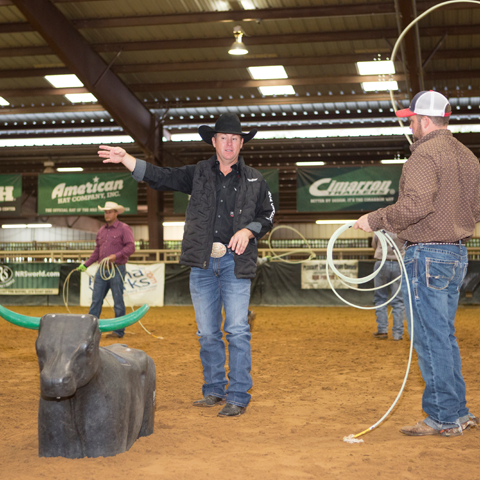
For you heelers, there are several heeling dummies for sale at NRS to practice throwing consistent loops. As with heading, you can accomplish a lot and develop a feel for your rope by roping one of the heeling dummies for sale at NRS. No matter which heeling dummy you choose, being disciplined and practicing the proper fundamentals of the correct swing angle, placing your top strand above the right hock, your bottom strand on the ground, and getting plenty of tip through are key to being a successful heeler. Once you’re throwing consistent loops from your ideal roping position, you can change things up and practice roping your dummy from different positions and how you need to alter your swing to catch the steer from those different positions.

And as the sports of breakaway and tie-down roping continue to grow, NRS offers a full line of calf roping dummies for sale. As with heading and heeling, consistency in position and loop placement is critical in advancing your skills as a roper. You must develop a spot where you know you can catch the dummy every time, making sure that position will carry over to roping live cattle. Once you’ve developed that sweet spot, you need to expand your range because it is rare to be able to completely set up your throw every time, especially in the breakaway, because times are so fast.
2. Find the Right Rope
Finding the right rope for you is crucial, and it is all based on preference. No matter if you prefer a lighter rope, heavier rope, more body to keep the rope open, or more tip to feel where the loop is in your swing, NRS has a rope that will fit your style. Once you’ve found a rope you like the feel of, it is important to purchase fresh ropes because rope manufacturers alter the “twist” of their ropes depending on the season, to give their ropes a consistent feel year-round. As you progress in your roping, you may desire a different feel in your ropes. You can check out our best-selling head ropes here. Often, heelers will start with a more limber rope, and as their skills progress, they will prefer a stiffer rope that allows them to put more power on their swing and deliver with more authority. Click here to see what heel ropes are most popular at NRS. Headers will sometimes graduate to stiffer rope, as their skills improve, but rarely will someone move past a soft in stiffness. When headers progress, their loops get crispier and their range gets farther. As calf ropers and breakaway ropers progress, their range becomes from further back, and their catches must be clean, bell-collar catches to get a time in the breakaway and set up a good go in the tie-down. Check out NRS' best selling tie-down and breakaway ropes here.
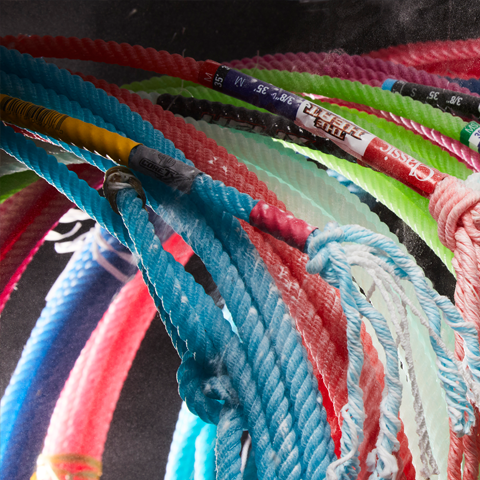
3. Work With Your Horse
Horsemanship is probably more important than how well you handle your rope. If you’re not able to communicate with your horse effectively, you will not be able to progress in your roping. You must be able to give clear cues to your horse to position them in the best spot for you to catch, and if you’re a header, you need to be able to ride your horse well after the catch so you can set up a good handle, making it easier for your heeler to complete the run. Heelers must be able to stay controlled down the arena and through the turn to set themselves up for the best possible throw.
You can work on your horsemanship in a couple of ways. The first and most effective is just spending time in the saddle, learning what your horse reacts to, and if necessary, getting your horse more broke and willing to respond to your cues. Just like on the dummy, you must be disciplined. Your cues need to be clear and consistent cues of pressure and release. The more clear and deliberate your cues are, the easier it is for your horse to understand what you’re asking.
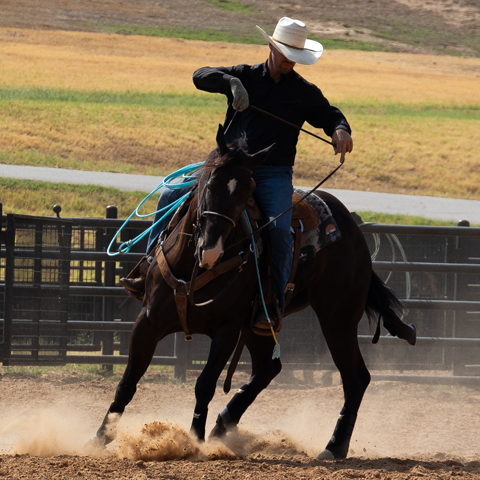
One of the most important things to consider when getting started out roping is the horse you’ll be riding. Often, you hear of people wanting to buy a horse and “learn together.” This is absolutely not advised. One of you needs to know what’s going on, and for that reason, it is in the best interest of the roper to buy a seasoned horse, having been there and done that. This will be much safer as the horse will be more desensitized, know their job, and not be spooked by new experiences, allowing the roper to focus on feeling their horse, ride to position, and rope, not having to worry about training the horse.
4. Use a Mechanical Roping Steer
Another way to develop your skills is to rope a mechanical roping dummy like a Smarty, Heelomatic, Hot Heels, or RopeSmart. If your horse has never been around a mechanical dummy or roping sled before, ease them into it. Start by walking your horse up to the roping dummy and gradually build up your speed. Familiarize your horse with the dummy at a walk, trot, and lope before simulating a full-contact run. The best thing about roping a mechanical dummy or roping sled is that it allows you to be consistent with your horse and your loops by being more controlled than live cattle.

A mechanical roping steer is an extremely important and realistic tool to practice roping calves and steers and advance your roping skills. They move like live animals and can produce a range of realistic corners and movements. Start slowly so you can recognize your mistakes easier, and as you progress, you can add speed.
5. Practice With a Partner
There are several reasons why practicing with someone is important. The first is safety. Even the most accomplished ropers and riders are susceptible to accidents because, at the end of the day, we’re dealing with horses and cattle that always have a degree of unpredictability to them.
Another reason to practice with someone is that they can help see things from another perspective, helping you determine what may be happening with your rope or horse, that you may not be able to identify. Having your practice partner video your runs is extremely helpful in analyzing positive and negative takeaways from each run.
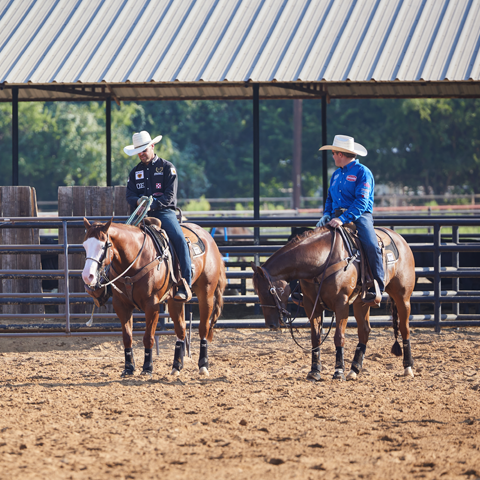
If you don’t have a practice partner and still want videos of your runs, NRS has you covered with our Move N See Pixio Robot Cameraman that is mounted on a tripod, then the device tracks you based on the movement of a band worn around your wrist.
6. Simulate Realistic High-Pressure Scenarios
Matching your practice partners in the practice pen, reaching on the dummy, and playing PIG on the heading dummy are great ways to add some pressure to your roping. These friendly competitions can help prepare you for when the money is up. Not only that, but some of the most pressure you will ever feel is going to come from your buddies in the practice pen!

7. Use Fresh Ropes
At NRS, we have a wide selection of the freshest breakaway and calf roping ropes, heading ropes, and heel ropes for sale, and we are sure to have a rope that fits your preference of the combination of weight, body, and tip. Fresh ropes are important because different seasons require different types of ties and coils. Kick, which is usually desirable in a head rope, is when you drop the loop from the first coil, and it points away from the coils. Backswing, often found in stiffer heel ropes, is when you drop the loop from the first coil and it points back to the coils, and if ropes are out of season, they may have too much kick or a backswing. Our location near five major rope manufacturers ensures you'll always find the freshest ropes for sale at NRS.
 |
Why You Should Use Fresh Ropes |
 |
The Difference Between 3-Strand, 4-Strand, and 5-Strand Team Ropes |
 |
The Best Calf Ropes for Beginners |

